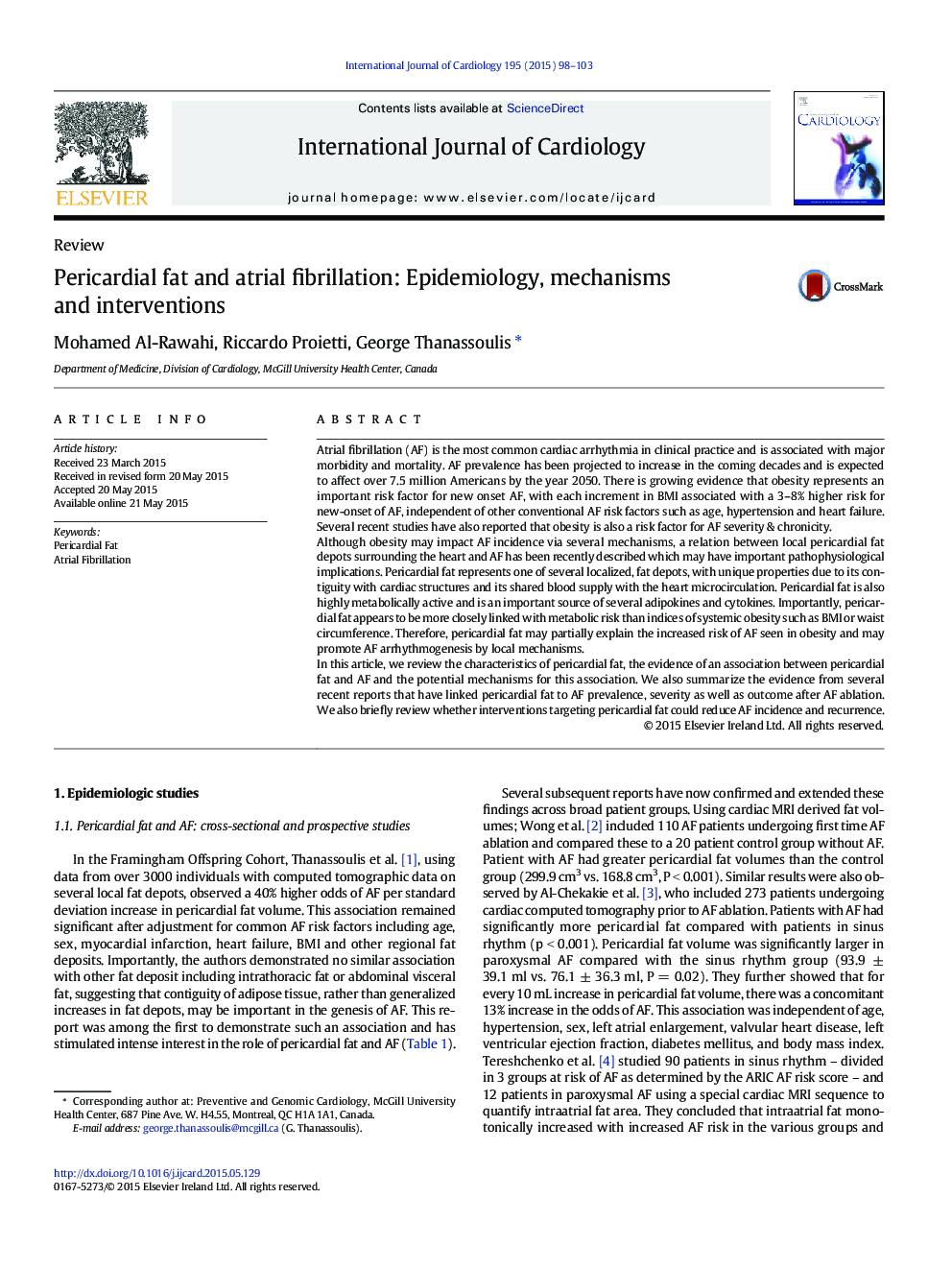| کد مقاله | کد نشریه | سال انتشار | مقاله انگلیسی | نسخه تمام متن |
|---|---|---|---|---|
| 5966098 | 1576157 | 2015 | 6 صفحه PDF | دانلود رایگان |
- We reviewed the literature to study the association between pericardial fat and atrial fibrillation.
- We demonstrated growing evidence that pericardial fat has direct effect on atrial fibrillation prevalence, severity and recurrence after ablation.
- We reviewed the effect of various interventions targeting pericardial fat such as weight loss, statins and pericardiectomy that could reduce atrial fibrillation incidence and recurrence.
Atrial fibrillation (AF) is the most common cardiac arrhythmia in clinical practice and is associated with major morbidity and mortality. AF prevalence has been projected to increase in the coming decades and is expected to affect over 7.5 million Americans by the year 2050. There is growing evidence that obesity represents an important risk factor for new onset AF, with each increment in BMI associated with a 3-8% higher risk for new-onset of AF, independent of other conventional AF risk factors such as age, hypertension and heart failure. Several recent studies have also reported that obesity is also a risk factor for AF severity & chronicity.Although obesity may impact AF incidence via several mechanisms, a relation between local pericardial fat depots surrounding the heart and AF has been recently described which may have important pathophysiological implications. Pericardial fat represents one of several localized, fat depots, with unique properties due to its contiguity with cardiac structures and its shared blood supply with the heart microcirculation. Pericardial fat is also highly metabolically active and is an important source of several adipokines and cytokines. Importantly, pericardial fat appears to be more closely linked with metabolic risk than indices of systemic obesity such as BMI or waist circumference. Therefore, pericardial fat may partially explain the increased risk of AF seen in obesity and may promote AF arrhythmogenesis by local mechanisms.In this article, we review the characteristics of pericardial fat, the evidence of an association between pericardial fat and AF and the potential mechanisms for this association. We also summarize the evidence from several recent reports that have linked pericardial fat to AF prevalence, severity as well as outcome after AF ablation. We also briefly review whether interventions targeting pericardial fat could reduce AF incidence and recurrence.
Journal: International Journal of Cardiology - Volume 195, 15 September 2015, Pages 98-103
